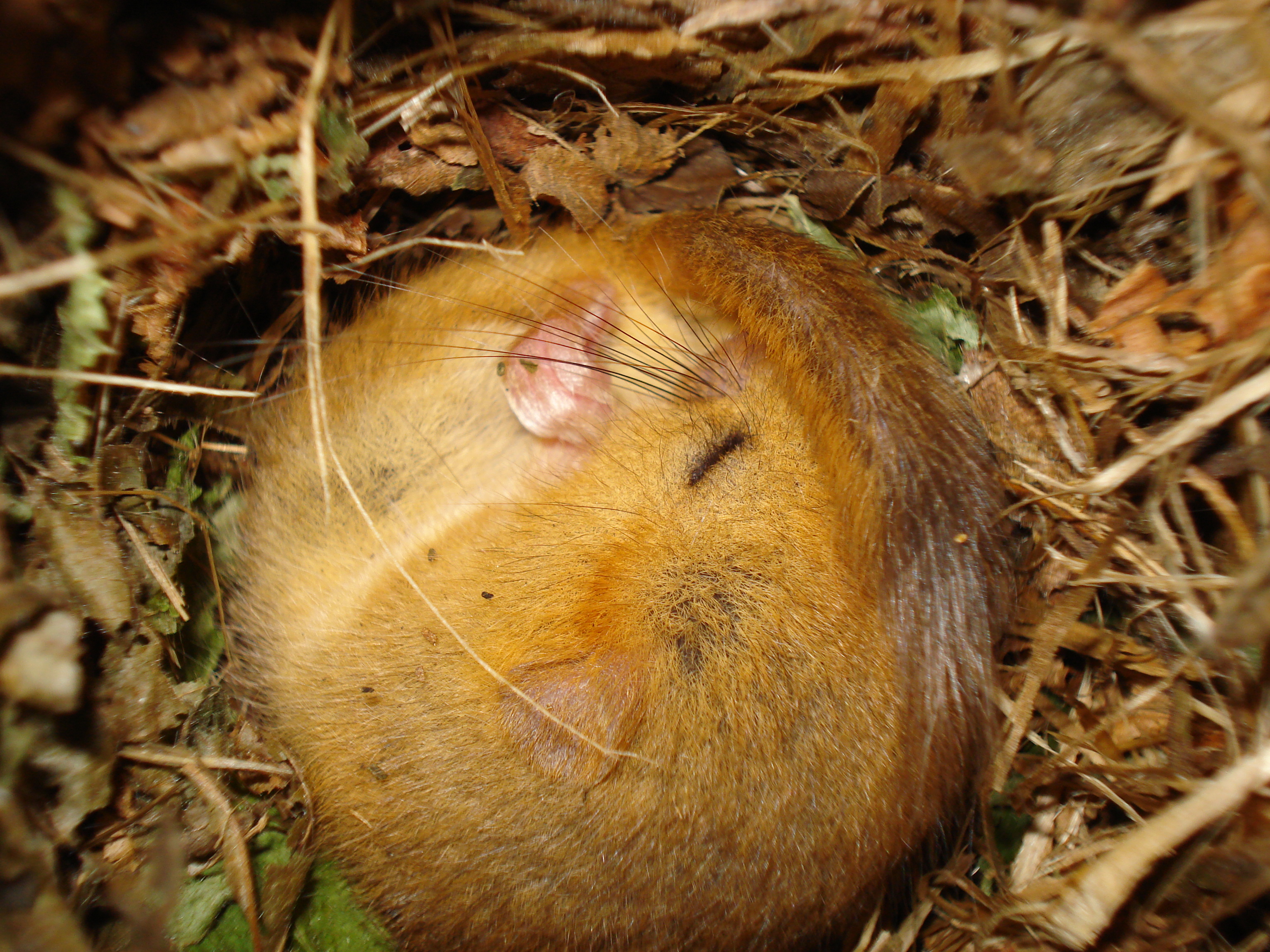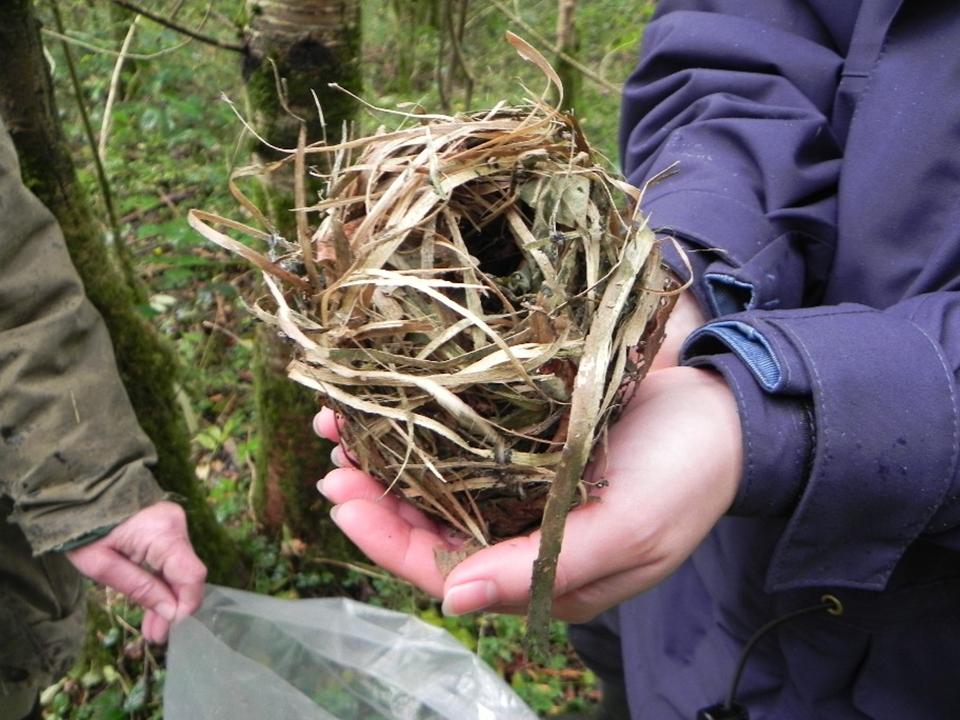Biodiversity
Related Links
Latest News
A Starring Role for Nantclwyd’s Lesser Horseshoe Bats
22.05.2015
Living Landscape Brought Back to Life
05.12.2014
More Information
Take a look at our project pages to find out more about what’s being done to conserve the hazel dormouse in Denbighshire.
Facebook Page
Hazel dormouse
The hazel dormouse is one of our best-loved mammals. In Denbighshire we’re very lucky to have one of the largest populations of dormice in the UK, at Coed Fron Wyllt near Ruthin.
 Description and identification: This small rodent is sandy brown in colour and has large black eyes. Unlike other mice it has a furry tail. Nibbled hazelnuts can be used to detect presence of dormice in a woodland, as they nibble nuts in a distinctive way. Download this postcard from North Wales Wildlife Trust to learn more.
Description and identification: This small rodent is sandy brown in colour and has large black eyes. Unlike other mice it has a furry tail. Nibbled hazelnuts can be used to detect presence of dormice in a woodland, as they nibble nuts in a distinctive way. Download this postcard from North Wales Wildlife Trust to learn more.
Habitat: Dormice prefer species-rich deciduous woodland with a dense shrub layer. Coppiced woodland has traditionally been an important habitat. They are also found in coniferous woodland, scrub and hedgerows.
Diet: Depending on the season, the diet of the dormouse varies according of the availability of different foods. Flowers and pollen are important in spring, insects in summer and fruits and nuts in autumn. Important food plants include hazel, honeysuckle and bramble.
 Ecology and reproduction: Dormice are mainly nocturnal and are agile climbers, spending most of their time foraging up trees, rarely coming down to ground level. They can spend up to three quarters of their lives asleep in round nests made from honeysuckle bark and leaves. Normally these nests would be built in hedges or holes in trees, but they will very happily use man-made dormouse boxes. The breeding season is between June and September and there are normally four or five young in a litter. Over the cold winter months they will hibernate on or below the ground, waking up in the spring.
Ecology and reproduction: Dormice are mainly nocturnal and are agile climbers, spending most of their time foraging up trees, rarely coming down to ground level. They can spend up to three quarters of their lives asleep in round nests made from honeysuckle bark and leaves. Normally these nests would be built in hedges or holes in trees, but they will very happily use man-made dormouse boxes. The breeding season is between June and September and there are normally four or five young in a litter. Over the cold winter months they will hibernate on or below the ground, waking up in the spring.
Distribution: Denbighshire is towards the northern limit of the hazel dormouse’s range in the Britain. It is found across Europe and parts of Russia.
Threats: Dormice are threatened by habitat destruction and fragmentation. They naturally occur at low population densities so are susceptible to changes in their environment.
Status: The hazel dormouse is protected under UK and European law, and is a priority species for conservation action at a UK, Wales and Denbighshire level.



